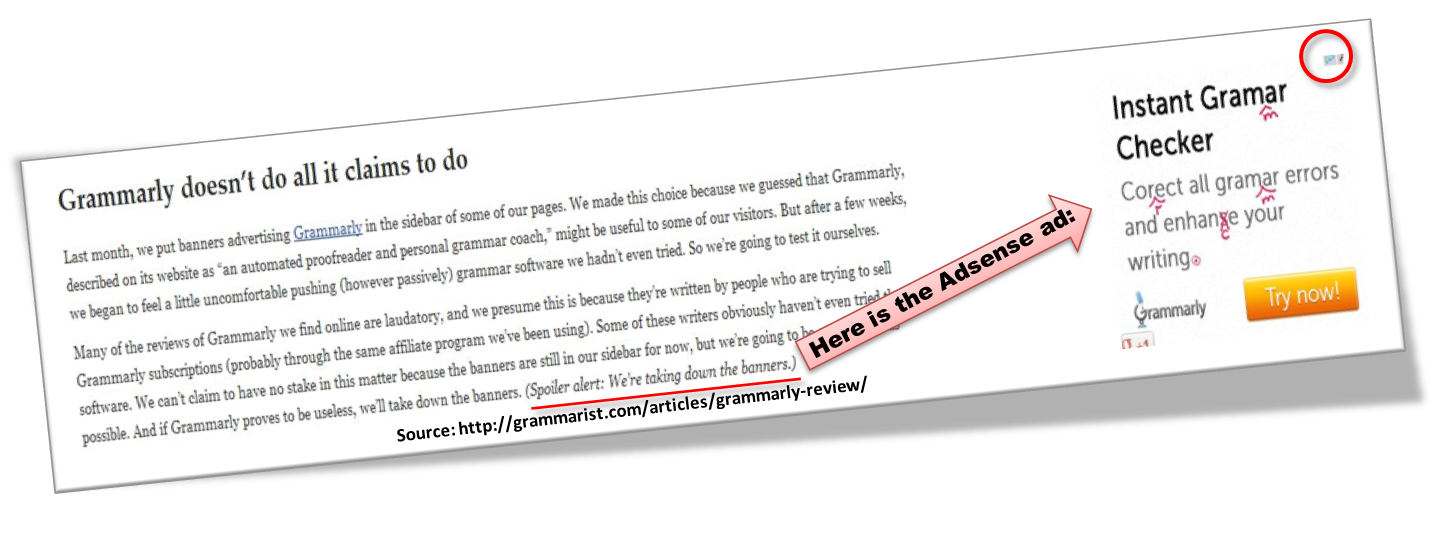 One of the deliberate design and conceptual choices I made for Darn Office, was removing Adsense ads entirely about four weeks ago. Google’s Adsense program is a genius and effective revenue model, which has not only helped Google to grow as a company at an unbelievable rate, but also helped so many individuals with online revenue. Just think about YouTube, niche sites and blogs. Adsense has fueled the transformation of the internet and allowed the general user to enjoy a plethora of free services.
One of the deliberate design and conceptual choices I made for Darn Office, was removing Adsense ads entirely about four weeks ago. Google’s Adsense program is a genius and effective revenue model, which has not only helped Google to grow as a company at an unbelievable rate, but also helped so many individuals with online revenue. Just think about YouTube, niche sites and blogs. Adsense has fueled the transformation of the internet and allowed the general user to enjoy a plethora of free services.
So, while I am quite confident, my readers are able to distinguish content created by me from Adsense ads, I grew quite unhappy with the randomness of the ads displayed.
Adsense Ads Are Targeted
Generally, Adsense ads are content driven. Yet, not only the context from Darn Office counts but also the interest of its readers determine the kind of ads that are displayed (How ads are targeted to your site). Interests based means depending on their recent online reading and search behavior.
Therefore, it is not surprising, when makeup banners flank my posts on my wife’s computer. Although I find it weird, and a bit annoying when ads don’t match my content at all, I do see how great it is when the ads match my readers interests. After all, this will increase your willingness to actually click on an ad and eventually increase my revenue.
However, I realized the bigger problem can be when the ads actually match my content. For you, it is certainly good if I write about Dropbox and a Dropbox ad shows up. How about a Google Drive banner? You are looking for cloud storage, find my post in which I review Dropbox, and Adsense offers you another option. That is certainly okay for me and useful for you.
Even better if I review a paid service and Google offers you a free alternative. There is nothing really to lose in these cases, is there?
But what if I write a review about a program that I find has absolutely no benefit for you? I may even warn you; and Adsense displays the very product? Like I already wrote, you are probably aware where this ad is coming from, but still I find this lack of control very unsatisfying.
Have you ever noticed that when an ad is showing up all the time and then someone writes a favorable review, you are more inclined to trust this product? I once read that most of the TV commercials for expensive products like cars, insurance, computers, etc. are not aimed for us grown-ups, but for our kids, to make them familiar with the products. Familiarity is a great factor for consumer behavior. Looks like another topic worth writing about (Elephant alarm!), but I digress.
I experienced exactly this familiarity effect myself in the case of Grammarly, an online proofreader. I started to see Grammarly Adsense ads everywhere about three weeks ago until, at some point, I got curious and checked it out. As I am writing this text, I am still in the trial phase and don’t have an opinion yet. I am planning to write a review, though, in the near future.
The interesting part is what I observed when I checked some reviews today. For example, the very thorough Grammarly review on Grammarist.com, which is about two years old (judging by the comments). It is obviously difficult to judge evolving products based on reviews that are years old. But that is not what this post is about. Interestingly, the authors announced two years ago that after their experience with the software they were going to take down their Grammarly banners. Below you can see how unfortunate such promises can play out when using Google ads. The Grammarly ad shows up next to the announcement:
No Control?
The example is indeed quite funny, and for the benefit of the site owners I simply assume they are not aware they have some control of the displayed ads (Allowing and blocking ad controls guide). One can block URLs for example. But even you as a user can control whether your online behavior is monitored for the display of interest based ads or not. You have probably noticed the little triangular symbol on the top right corner of Adsense ads. It is the symbol for AdChoices, the program/organisation behind the interest-based advertising. When you click the symbol you can opt out of your participation in this type of advertizing. To be clear you will still see ads, but they won’t be based on the pages you open or key words you search.
My choice
I don’t want to pretend to have a greater agenda in mind by opting out of Adsense revenue. The inline ads within my post simply ruined the formatting and restricted me in my freedom of where to put pictures. Depending on the type of ad I felt forced to write paragraphs of a certain length to not make the posts look weird.
I noticed that text ads got more clicks than images within the posts and banners more in the sidebar. Larger is better than smaller. Some banners just look great, and others ruin the entire look of the page. I simply didn’t want to deal with these things anymore and wanted to be in full control how this website looks. I hope you don’t mind 😉
[ois skin=”subscribe 2 no AL”]
